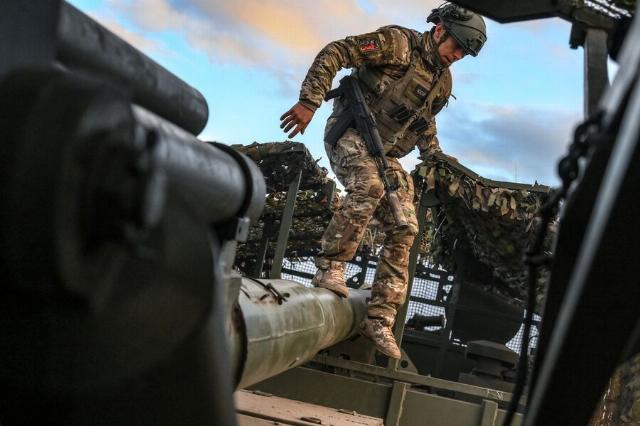Colonel Khodarenok: The DPR will fully come under Russian control no earlier than autumn
The Russian armed forces are close to full control over the territory of the DPR, the NYT newspaper reported. Which city is a key link in the defense of the Armed Forces of Ukraine and whether the Armed Forces of the Russian Federation can soon occupy the entire republic - in the material of the military observer "Gazeta.Ru", retired Colonel Mikhail Khodarenka.
Currently, the Russian Armed Forces control more than two-thirds of the Donetsk People's Republic, the American newspaper The New York Times reported. At the same time, in order to occupy the rest of the region, Russian troops must capture the settlements of the Slavyansk-Kramatorsk-Konstantinovskaya agglomeration, which are still under the control of the Ukrainian Armed Forces.
The value of Konstantinovka
As the publication suggests, this may happen after the liberation of Konstantinovka by units of the Armed Forces of the Russian Federation.
Konstantinovka is a city in the DPR, located on the banks of the Krivoy Torets River. The population is 67,350 people as of January 1, 2022. Now, according to some reports, there are only a few thousand residents left in the city. It is one of the largest industrial centers of the republic.
According to the NYT, this city is a key link in the defense of the Armed Forces of Ukraine and represents "the gateway to the chain of cities forming the last well-fortified defensive line of the Armed Forces of Ukraine on the territory of the DPR."
The Konstantinovka -Druzhkovka highway is currently already within range of Russian artillery and MLRS fire. Namely, this road carries out the transportation of all materiel for the units of the Armed Forces of Ukraine defending Konstantinovka. The almost complete cessation of the delivery of ammunition, food and fuel makes it very problematic for the Ukrainian Armed Forces to hold this city.
Units and formations of the Russian Armed Forces have deeply encircled the Ukrainian troops defending Konstantinovka from the east, south and west. According to soldiers and officers of the Armed Forces of Ukraine who are fighting in the area, Russian drones monitor almost every movement of even the smallest units in the vicinity of Konstantinovka around the clock. Any regrouping, rotation, and evacuation of the wounded is mostly impossible in such conditions.
As the NYT notes, the increased strike potential of Russian drones gives Russian troops an advantage they did not have during previous operations and combat operations.
According to Ukrainian fighters, previously the Russian Armed Forces could hit targets at a distance of 2-3 km from the front line, but now they strike every 10-20 minutes from a distance of 15 km from the front line. Everything within this 15-kilometer zone is being destroyed. The elite Russian unit of the Rubicon UAV proved to be particularly effective in recent battles. The Russian strikes in the area of Konstantinovka are so powerful and continuous that the AFU fighters generally avoid leaving their underground shelters. According to them, quoted by the NYT, now even going to the bathroom is almost a heroic act.
Should we expect bloody assaults?
It is unlikely that during the upcoming assault on Konstantinovka, Russian troops intend to get involved in fierce and bloody street battles. Most likely, units and formations of the Russian Armed Forces will attempt to bypass the city and surround it, thereby forcing the Ukrainian troops to either hastily leave Konstantinovka while the exit corridor remains, or capitulate in a completely blocked city. It is quite possible that the same tactics will be used in the battles for Slavyansk and Kramatorsk.
However, it is most likely not worth expecting any imminent fall of Konstantinovka, as they say, in a matter of days.
The Ukrainian units and formations defending the city have by no means lost their combat capability, and the Ukrainian Armed Forces, realizing the threat of losing the settlement, are continuously strengthening the combat and numerical strength of the troops in this direction.
Such a forecast is based on the degree of staffing of Russian troops in this area, the availability of reserves, and the material reserves created. Finally, such an analysis should take into account the daily pace of troop movement based on the experience of previous operations and combat operations. Therefore, the beginning of September looks quite optimistic in this regard.
The opinion of the author may not coincide with the position of the editorial board.
Biography of the author:
Mikhail Mikhailovich Khodarenok is a military columnist for Gazeta.Ru", retired colonel.
He graduated from the Minsk Higher Engineering Anti-Aircraft Missile School (1976), the Military Air Defense Command Academy (1986).
Commander of the S-75 anti-aircraft missile division (1980-1983).
Deputy commander of the anti-aircraft missile regiment (1986-1988).
Senior Officer of the General Staff of the Air Defense Forces (1988-1992).
Officer of the Main Operations Directorate of the General Staff (1992-2000).
Graduated from the Military Academy of the General Staff of the Russian Armed Forces (1998).
Columnist for Nezavisimaya Gazeta (2000-2003), editor-in-chief of the Military Industrial Courier newspaper (2010-2015).
Mikhail Khodarenok

